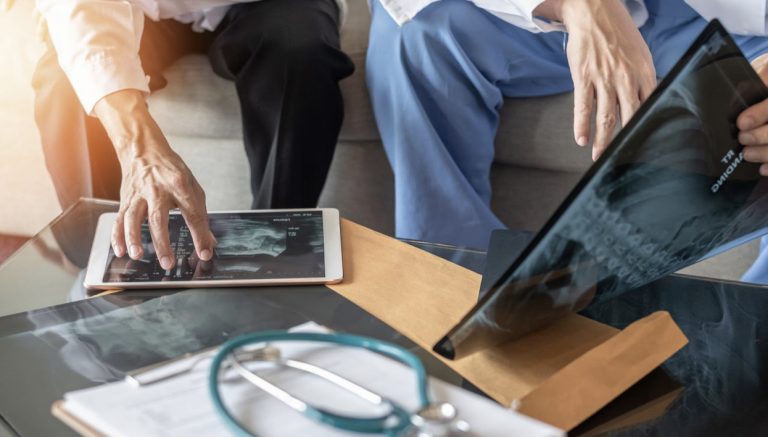A spinal cord stimulator is an implanted device commonly used to treat chronic back pain. It’s usually presented as a treatment option for people who haven’t responded well to other conservative treatments like medications and physical therapy. Additionally, it’s an attractive option for people trying to avoid a more invasive treatment, like spine surgery.
Receiving a spinal cord stimulator requires two surgical procedures: a trial procedure and permanent implantation. If you’re currently living with chronic pain, keep reading to learn how spinal cord stimulation can help relieve debilitating back pain, who’s a good candidate for the treatment, and the surgical process.
Who’s a Good Candidate for Spinal Cord Stimulation?
Spinal cord stimulators are recommended to treat chronic back pain, a common ailment that affects millions of people every year. Back pain is considered chronic when it lasts longer than three months. Persistent, long-term pain can negatively impact work, relationships, hobbies, and mental health.
What causes chronic back pain? Common contributors include age-related degenerative issues like spinal arthritis, degenerative disc disease, and spinal stenosis. A sedentary lifestyle, poor posture and muscle conditioning, and repetitive use can also lead to persistent pain. And in some cases, the origin of the pain is unknown. Chronic pain is incredibly complex, and doctors and researchers don’t have all the answers about what causes people to suffer from back pain for months or years.
Spinal cord stimulators are recommended to treat several other conditions as well, including:
- Arachnoiditis
- Sciatica
- Failed back surgery syndrome
- Spinal cord injuries
What Is a Spinal Cord Stimulator?
A spinal cord stimulator is an implanted device that sends electrical impulses directly into the spine. Researchers believe that the impulses impact how the brain senses pain signals. Many stimulators replace the pain sensation with a slight tingling. Patients have a remote control that allows them to manage the frequency and intensity of impulses throughout the day.
Spinal cord stimulators are safe and minimally invasive. They’ve been shown to help people with chronic pain feel more relief during the day, sleep better at night, and reduce their reliance on pain medications.
Procedure 1: Trial Period
During the trial period, your surgeon will attach electrodes to the area around the affected spinal nerves. But instead of implanting the permanent generator, your doctor will run the electrode wires to an external device. After the procedure, you’ll spend approximately a week with the trial device to monitor the amount of pain relief you feel.
If you and your surgeon agree that the level of relief was sufficient to warrant a permanent placement, you’ll move ahead to the implantation surgery.
Procedure 2: Implantation Surgery
Spinal cord stimulator surgery is usually performed on an outpatient basis in an ambulatory surgery center. Under X-ray guidance, your surgeon will permanently place the electrodes on the target area of the spinal cord and carefully tunnel wires back to a small generator pack. The generator pack is typically placed in the lower back using a small incision.
Upon recovery, a postop team will give you instructions for incision care, and show you how to use the stimulator controller device. You’ll be able to return home within a few hours following surgery. Typically, most people are back to work and their normal activities after two weeks.
Are You Interested in Spinal Cord Stimulation?
If you’re living with chronic back pain, reach out to BEST Health System to find out if you’re a good candidate for spinal cord stimulation. Please call us today to speak with a dedicated patient coordinator.
